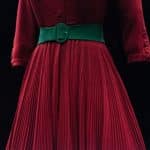In this age where technology has taken a significant shift, televisions have not been left behind. Modern televisions now boast of advanced features that will leave you glued to your screen, and the LED backlight technology is a part of this revolution. Two technologies, edge-lit and full-array LED backlights, have emerged and become prominent in the industry. However, you might be puzzled about how these two technologies work and how they influence your TV’s picture quality. This article will provide a comprehensive comparison between edge-lit and full-array LED backlights and how they enhance TV picture quality.
The concept of LED backlighting in TVs
Before diving into the comparison, allow us to first explain the concept of LED backlighting in televisions. In essence, LED backlighting in TVs involves the use of LEDs (Light Emitting Diodes) to produce light that illuminates the LCD (Liquid Crystal Display) screen. This technology has significantly enhanced the picture quality of LCD TVs, making them a preferable option for many consumers.
In parallel : How Can You Make a Classic Peacoat Work for Casual Outfits?
LED backlighting can either be edge-lit or full-array. The difference between these two lies in the location and arrangement of the LEDs on the television. In an edge-lit LED TV, the LEDs are placed around the TV’s edge (either on the sides, top, or bottom). On the other hand, in a full-array LED TV, the LEDs are arranged behind the entire screen. This difference in LED arrangement consequently affects the picture quality, and that’s what we want to demystify.
Comparison between Edge-Lit and Full-Array LED Backlights
Now, let’s delve into the specifics of how edge-lit and full-array LED backlights differ and how they enhance your TV’s picture quality.
Also to read : How to Design Real Estate Projects That Support Multigenerational Living?
Edge-Lit LED Backlights
Edge-Lit LED backlight technology is the most common in LCD TVs. As we mentioned earlier, the LEDs in edge-lit TVs are strategically placed around the TV’s edge, from where light is projected towards the center of the screen. This technology allows for a thinner and lighter TV design, which has contributed to its popularity.
When it comes to picture quality, edge-lit backlighting has its strengths and drawbacks. On the bright side, edge-lit LED TVs have a decent picture quality that is significantly better than that of traditional LCD TVs. However, they may not provide the best contrast levels compared to full-array LED TVs. Given that the light is projected from the edges toward the center, the light often lacks uniformity, which may result in some darker and lighter areas on the screen.
Furthermore, edge-lit LED TVs do not support local dimming, a feature that allows specific areas of the screen to be dimmed. This means that the entire screen will be lit even when displaying a dark scene, which could affect your viewing experience.
Full-Array LED Backlights
Full-array LED backlighting is an advancement of the edge-lit technology. In full-array LED TVs, the LEDs are structured behind the whole screen. This arrangement allows for more control over the light output, enhancing the picture quality significantly.
One significant advantage of full-array LED backlighting is that it supports local dimming. Local dimming is a unique technology that allows different parts of the screen to be dimmed independently, depending on the content. This means that during a dark scene, parts of the screen can be dimmed, while the bright parts remain lit. This not only improves the contrast ratio but also creates a more vivid and lifelike picture.
On the downside, full-array LED TVs tend to be thicker and heavier due to the arrangement of the LEDs. This might not be an issue for individuals who prioritize picture quality over TV design.
Impact of Edge-Lit and Full-Array LED Backlights on TV Picture Quality
Understanding how edge-lit and full-array LED backlights enhance the picture quality of your TV will enable you to make an informed decision when purchasing your next TV.
The edge-lit LED TVs offer a good picture quality, with brighter colors than traditional LCD TVs. However, you might notice some inconsistencies in lighting and contrast in different parts of the screen due to the edge-based LED arrangement.
On the other hand, full-array LED TVs provide a superior picture quality, thanks to the direct backlighting and local dimming capability. This technology allows for a more balanced and uniform light distribution, resulting in richer colors, deeper blacks, and better contrast. However, keep in mind that full-array LED TVs are generally thicker and more expensive due to the advanced technology.
Parting Thoughts
So, there you have it. The comparison between edge-lit and full-array LED backlights and how they enhance your TV’s picture quality. While both technologies have their strengths and drawbacks, your choice will ultimately depend on your viewing preference and budget. If you prioritize a slim TV design and affordability, then an edge-lit LED TV might be the one for you. However, if you prioritize picture quality and don’t mind a thicker TV, then a full-array LED TV would be a preferable choice. Remember, the ultimate goal is to enhance your viewing experience, so choose what best suits your needs.
How Direct Lit LED Backlighting Fits into this Picture
While edge-lit and full-array LED backlights dominate the market, there’s another type of LED backlighting that needs mention: direct-lit LED backlighting. This technology sits in between edge-lit and full-array LED backlights in terms of performance, price, and placement of LEDs.
Direct-lit LED TVs are like a hybrid of edge-lit and full-array LED TVs. The LEDs are placed directly behind the screen, like in full-array LED TVs, but the number of LEDs used is significantly less. Because of the lesser quantity, these TVs can’t provide the same level of local dimming as full-array LED TVs, but they still offer a better viewing experience than edge-lit TVs.
When it comes to picture quality, direct lit LED TVs offer a better contrast ratio than edge-lit LED TVs because of their ability to control light distribution more efficiently. However, they can’t match the precision of full-array LED TVs due to their fewer dimming zones. Still, they offer a good compromise between cost and quality, making them an attractive choice for budget-conscious consumers who are not willing to compromise too much on picture quality.
Direct lit LED TVs are also thicker than edge-lit LED TVs, but they are generally slimmer than full-array LED TVs. Given their unique combination of features, direct lit LED TVs cater to a different segment of consumers who value good picture quality and a reasonable price.
The Impact of Viewing Angles on Picture Quality
When discussing the picture quality of TVs, it isn’t just about the backlighting. Viewing angles also play a crucial role in determining your overall viewing experience. The viewing angle denotes the maximum angle at which the TV can be viewed without significant degradation in picture quality.
Edge-lit LED TVs, despite their slim design, often suffer from poor viewing angles. This means that the picture quality deteriorates when the TV is viewed from extreme angles. This could be a problem if you have a large family or like to host movie nights, where viewers might be seated around the room.
On the other hand, full-array LED TVs, owing to their uniform light distribution, tend to have better viewing angles. This means they maintain their picture quality even when viewed from the side. However, it’s worth noting that the specific viewing angles can vary depending on the LCD panel quality used in the TV.
Direct lit LED TVs, like full-array LED TVs, also offer better viewing angles than edge-lit LEDs. This means that they can also be a good choice for larger gatherings.
Conclusion: Choosing the Right LED Backlight Technology
In conclusion, the choice between edge-lit, full-array, and direct-lit LED backlighting depends on your individual needs, budget, and viewing habits.
If you want a slim and affordable TV and can compromise a bit on picture quality, then edge-lit LED TVs would be a suitable choice. However, if you’re after superior picture quality and don’t mind paying a bit more or having a thicker TV, then full-array LED TVs would serve you well.
For those who want a balance between good picture quality and price, direct-lit LED TVs would be a reasonable choice. And remember, viewing angles are also crucial, especially if you often watch TV with family or friends. So, consider all these factors before deciding on the right LED backlight technology for your next TV.
Remember, technology is constantly evolving, and newer, more advanced types of LED backlighting could emerge in the future. Therefore, it’s essential to stay informed and make your purchase based on the most up-to-date information.












